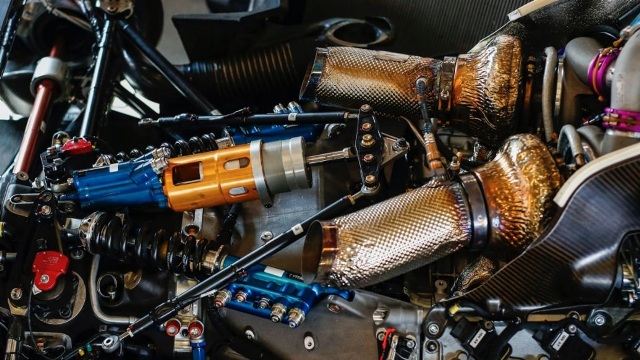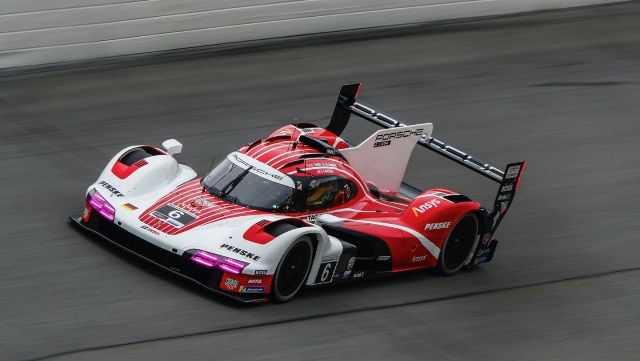
The technology of the new Porsche 963 hypercar/GTP prototype
On 16 December 2020, Porsche announced its commitment to developing an LMDh prototype for racing from January 2023. The prospect of fielding a vehicle in both the FIA World Endurance Championship (WEC) and the North American IMSA WeatherTech SportsCar Championship proved to be the deciding factor for the Executive Board’s decision at Porsche AG. Less than five months later, Porsche divulged its close partnership with Team Penske. The new Porsche Penske Motorsport team for international racing was born. The squad operates out of two locations: The IMSA headquarters is in the American team’s home of Mooresville, North Carolina, with the WEC operations run from Mannheim, Germany. After the start of the active testing phase for the new prototypes in January 2022, the factory squad is about to celebrate its race debut in Daytona.
The new Porsche 963 makes its official race debut at the 24 Hours of Daytona in the US state of Florida (28/29 January). Prior to this, the hybrid vehicle had covered more than 33,000 kilometres at tests and the so-called Roar at Daytona. In the final qualifying session, the two works cars qualified on positions two (No. 7) and nine (No. 6). The type designation alone makes the path clear that the Stuttgart sports car manufacturer is pursuing with the Porsche 963: The new car for the top classes Hypercar (FIA WEC) and GTP (IMSA) puts out around 500 kW (680 PS) in race mode and is expected to continue the successful legacy of the Porsche 962.
The new racing prototype is easily recognisable as a real Porsche. Its design combines modern elements with historic roots. The front section is reminiscent of the soft shapes of the legendary 956 and 962, while the continuous illuminated strip is a salute to the characteristic hallmark of the current 992-generation nine-eleven model series. “The regulations give us a performance window,” explains Christian Eifrig, technical project manager of the Porsche 963. “In terms of downforce and lap times, the vehicle must remain within a defined performance range as prescribed by the regulations. This is the only way for the sport’s governing bodies to equalise the cars of different manufacturers using Balance of Performance,” Eifrig continues. The so-called BoP, a classification rating for different vehicles in the new top classes, ensures a level playing field and thrilling racing.
Factors such as minimum weight, maximum revs per minute or energy per stint make the vehicles equivalent in terms of performance. “It’s quite challenging to reach this performance window. At the same time, it’s about achieving the typical Porsche look. We had the difficult task of finding the perfect compromise between efficient aerodynamics and an immediately recognisable design language.” For the ACO and FIA governing bodies to accept the so-called brand identity, it must also meet many other criteria. The Porsche 963 received immediate approval.

V8 turbo engine: Modern unit based on the Porsche RS Spyder
While the regulations specify that the hybrid components and the gearbox must be cost-efficient standardised components, it allows great leeway in choosing the combustion engine. In principle, the following applies: Power output is capped at 520 kW (707 PS) with the minimum weight set at 180 kilograms including the periphery. In late 2020, Stefan Moser, as the head engineer responsible for the Porsche 963 powertrain, and his 18-strong team opted for the 4.6-litre engine from the Porsche 918 Spyder.
Information Source: Read More “
Energy Monitors , Electric Power , Natural Gas , Oil , Climate , Renewable , Wind , Transition , LPG , Solar , Electric , Biomass , Sustainability , Oil Price , Electric Vehicles,


